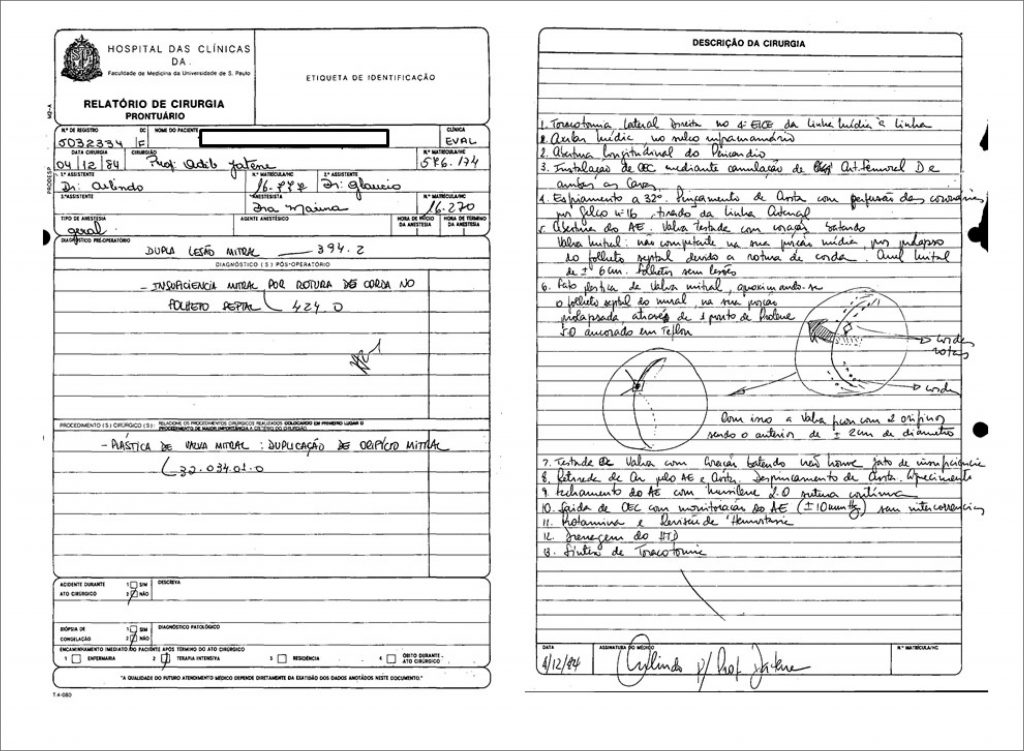Arq. Bras. Cardiol. 2021; 117(3): 424-425
The Double-Orifice Technique in Mitral Valve Repair: 35 Years of History
The advantages of mitral valve repair are lower morbidity and mortality, reduced risk of thromboembolism and endocarditis, improved survival, and better preservation of left ventricular function. The most common cause of degenerative mitral regurgitation is a myxomatous valve with segmental prolapse of the posterior leaflet, a lesion that can be corrected by classical techniques such as quadrangular resection, but other lesions may require more complex surgical techniques, for instance, correction of anterior leaflet prolapse or Barlow disease. Mitral valve repair in rheumatic patients is still a challenge.
In December 1984, Adib Domingos Jatene MD, PhD performed the first “duplication of the mitral orifice”, in a female patient with mitral insufficiency due to rupture of anterior leaflet chordae (). The technique restored mitral competence by anchoring the free edge of the prolapsing leaflets to the corresponding free edge of the opposing leaflet with a 5-0 polypropylene stitch reinforced with pledgets. The patient presented good immediate and long-term evolution.
[…]
781

